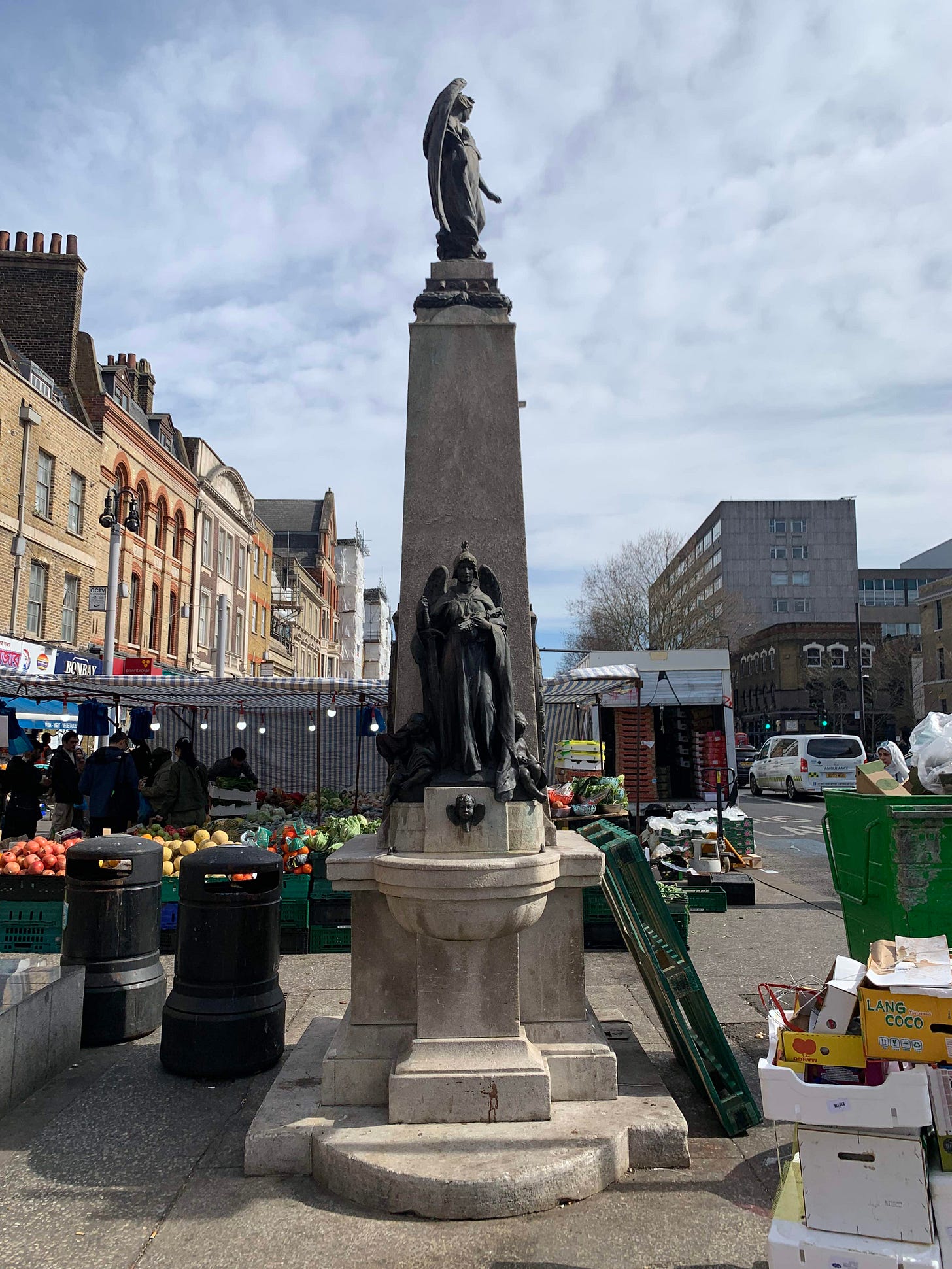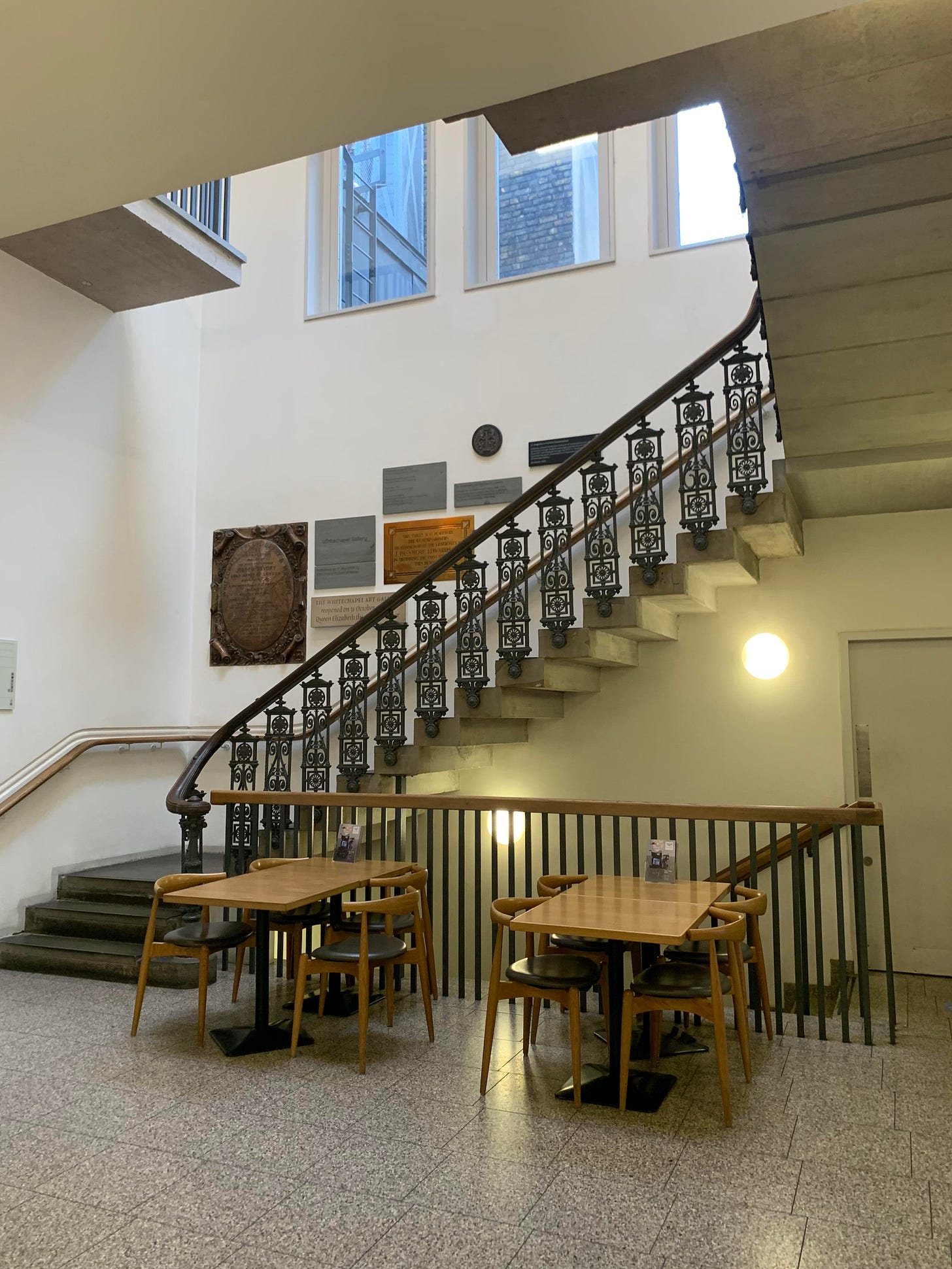Enduring cultural spaces of the old East End
Five free museums in east London – and one that costs £5
Hello and welcome to Wooden City, a newsletter about London.
If you haven’t come here via @caffs_not_cafes, I'm a writer called Isaac Rangaswami and this is my Substack.
Every other week I publish an article about locally important places such as pubs, shops, restaurants and public spaces.
Wooden City is funded by its readers and paying subscribers get much more. This includes access to maps, full articles and an archive of material covering over 250 places so far.
Take a right out of Whitechapel station and after a few minutes you’ll reach a gap between the market stalls, where the recycling bins are kept. Here also stands a 113-year-old pillar, decorated with angels, cherubs and drinking fountains that don’t produce water anymore. One of those cherubs has a piece of fabric draped across their lap, to represent the textiles work carried out by a local Jewish population who funded this monument’s construction and have long since dispersed.
Walk around other parts of the East End and you’ll find more fragments of a past that no longer defines it. Bow is bordered by natural and manmade waterways, but little commercial traffic floats along them today. Bethnal Green still has S. R. Kelly & Sons, but its branches of Harris and Robins are among its numerous pastry and potato ghosts. After it was a warehouse and before it was an events venue, an ill-fated shopping centre resided in the bowels of Wapping’s Tobacco Dock.
Bombs, loss of industry and movement of people have remade the East End, but some of the changes were only superficial. Although the Victorian slums were cleared, other precarious living situations remain. Although East Enders now eat fewer pies, they eat plenty of triangular pastries fried in oil or ghee. Although the docks and factories went quiet, they were reanimated as commercial spaces after private sector interests beat out public ones in the 1980s. Meanwhile, new forms of insecure and exploitative labour filtered out onto the streets, such as the delivery industry powered by cyclists with teal boxes on their backs.
While such shifts aren’t unique to this area, they are made more noticeable by its singular past. The old East End was defined by impoverishment, but also by social concern, and spaces built for the welfare of its former inhabitants still persist. Some of the oldest buildings between Limehouse and Hackney are schools, libraries, hospitals and model dwellings. But the biggest thing is a vast green corridor, designed to extend the lives of a population that was dying too soon.
The East End’s rich cultural inheritance has roots in the severity and benevolence of the Victorian period. These include grand museums and galleries built for edification, as well as repurposed buildings where East Enders once lived, worked and learned. The best of these spaces remain either cheap or free, and have evolved with the times. In this way they continue the tradition from which they came, by existing for the good of the Londoners that surround them.
Whitechapel Gallery
At the Whitechapel Gallery, there are some chairs and tables by the stairs with no discernible connection to the cafe a few metres away. I’ve seen people without purchases going on their phones here, or simply staring into space. This is a busy part of Whitechapel, but this museum’s open door and public furniture mean its connected to the street outside rather than closed off. Not everything inside is free, but a sense of public-spiritedness pervades the building.




